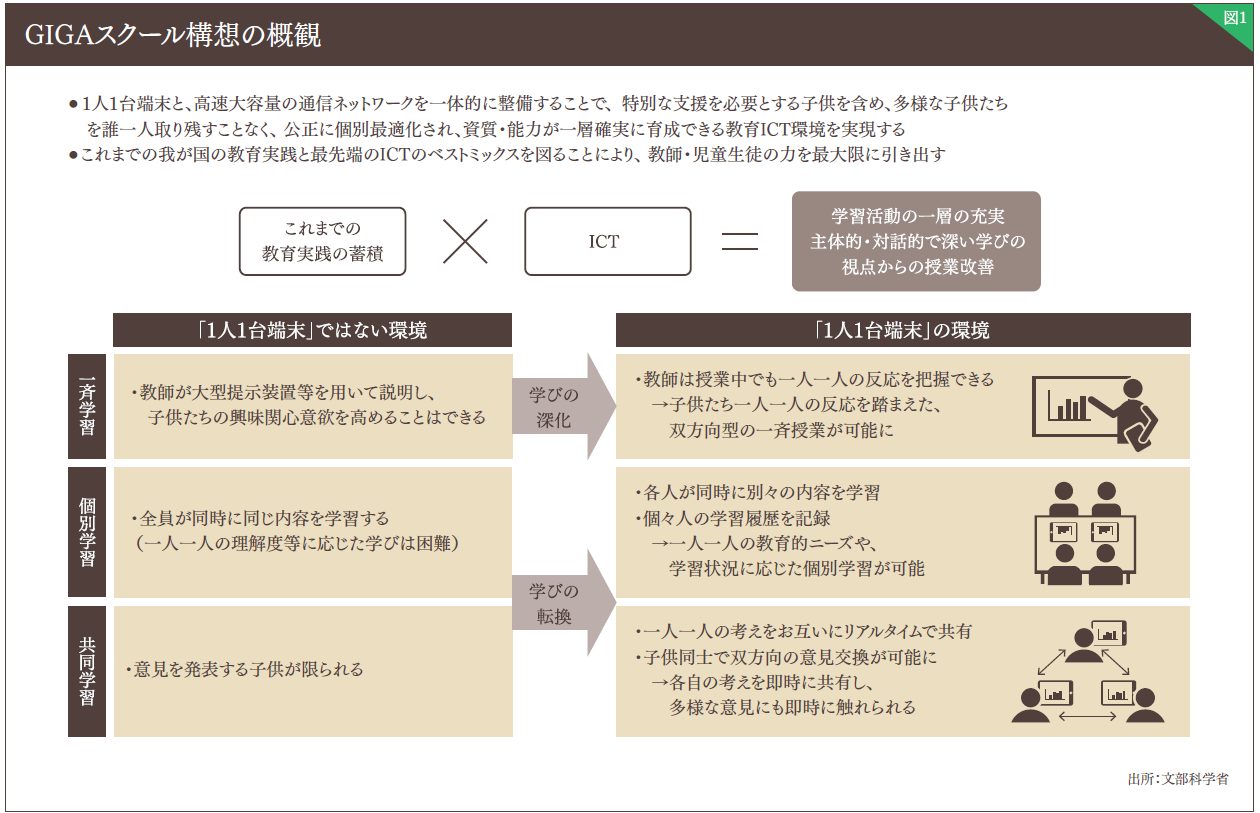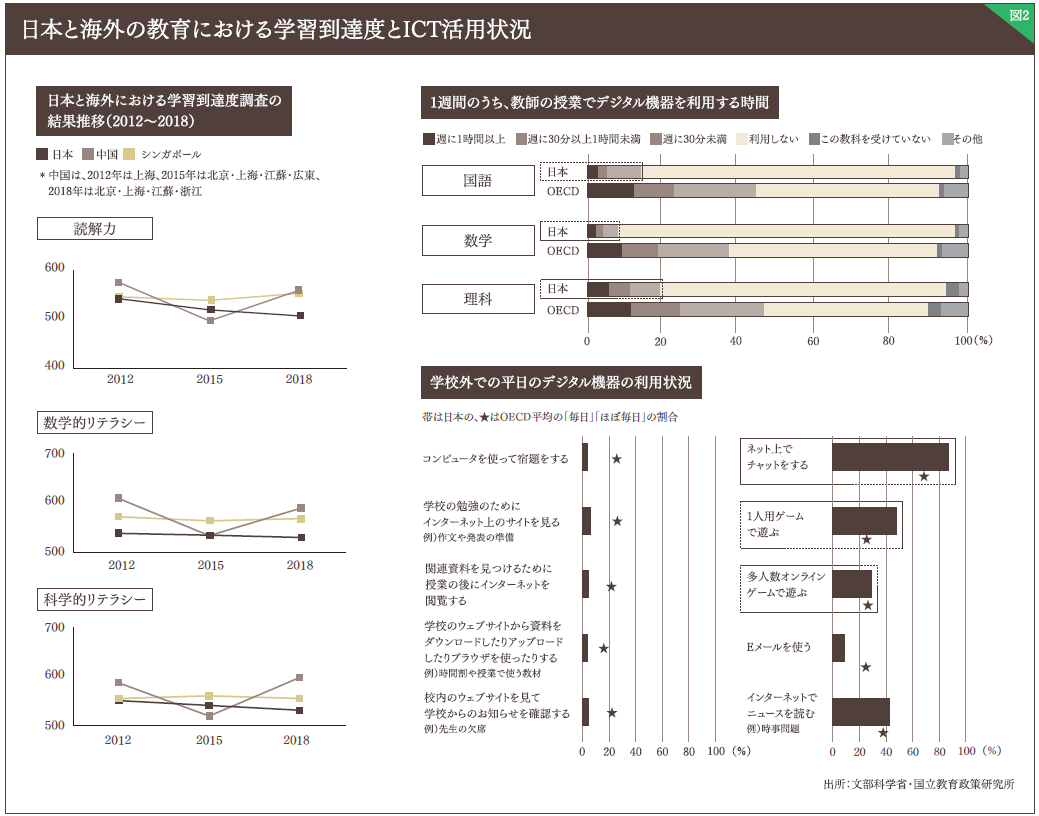Value of the GIGA School Program

Background and Current Status of the GIGA School Initiative
When governments set ambitious goals and take the lead in investing in policies, they can sometimes bring about transformative changes in the economy and society. The current efforts towards decarbonization are a prime example. The "Carbon Neutral Declaration," still fresh in our memory, sets the drastic goal of reducing greenhouse gas emissions to virtually zero by 2050. Additionally, the government itself established the Green Innovation Fund, which has acted as a catalyst for private companies to start research and development and capital investment in succession. This move has significantly altered the global perception of Japan.
Similarly, the GIGA School Initiative involves government investment based on ambitious goals. On December 13, 2019, the Cabinet approved the FY2019 supplementary budget, allocating 231.8 billion yen to "Realizing the GIGA School Initiative." As a result, by FY2023, tablet devices will be distributed to elementary and junior high school students, and a school management support system will be introduced to assist with attendance management and grade processing, which is expected to accelerate work style reform for teachers.
There is no point in distributing tablet devices alone if they are not connected to a network. Therefore, the GIGA School Initiative also involves the integrated development of a high-speed, large-capacity communication network system within schools and the enhancement of the ICT environment. (Figure 1)

Issues in the Field of Education Emerging as We Move Towards "Society 5.0"
The initiative appears to be driven by a concern that reforms in school education may lag behind as we approach the advent of "Society 5.0." "Society 5.0" is a new society characterized by the creation of new values and services that bring prosperity to people, and education is no exception.
An examination of the Programme for International Student Assessment (PISA), an international assessment of 15-year-olds conducted every three years by the Organisation for Economic Co-operation and Development (OECD), reveals concerns about Japanese school education. (Figure 2) Japan is not only falling behind other Asian countries (such as China and Singapore) but also shows a declining trend in academic ability across all three areas (reading, mathematics, and science). Additionally, survey results on the use of digital devices both in and out of school show that Japan lags internationally compared to OECD countries. Furthermore, Japanese children's use of digital devices outside of school is predominantly focused on "non-academic" activities, such as video-sharing apps like YouTube and TikTok, indicating a greater emphasis on play rather than learning.

Advances in ICT Environment for Education Amid the COVID-19 Pandemic
Let us now take a closer look at the objectives of the GIGA School Initiative. The primary goal is to provide one device per student and an integrated high-speed, high-capacity communication network, creating an educational environment where all children, including those who need special support, can be fairly and individually optimized without leaving anyone behind, and where their qualities and abilities can be more reliably developed.
By combining traditional Japanese education with cutting-edge technology, we aim to maximize the potential of teachers and students. Additionally...
To read the full text, please download the PDF.
DownloadPDF(1.07 MB)